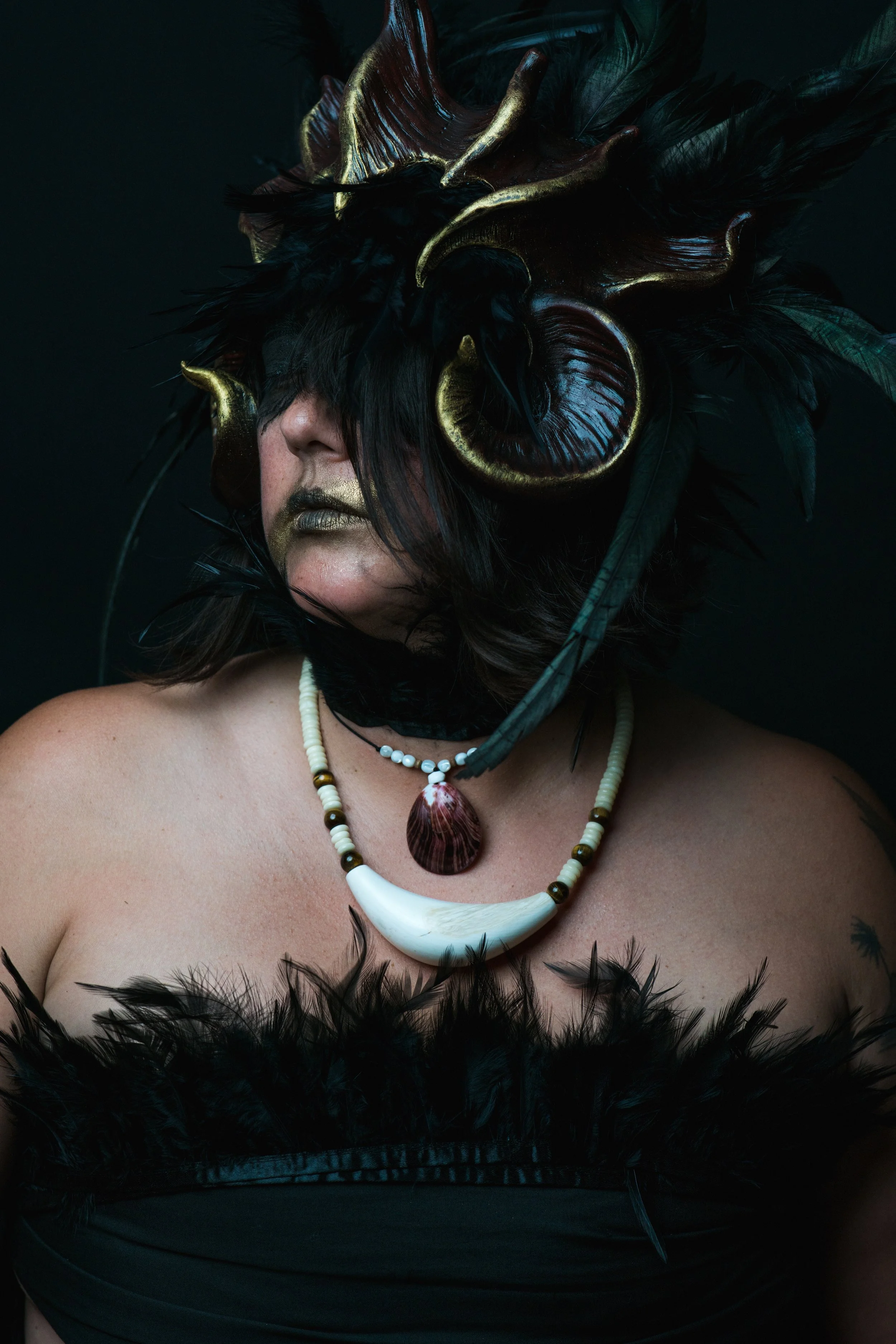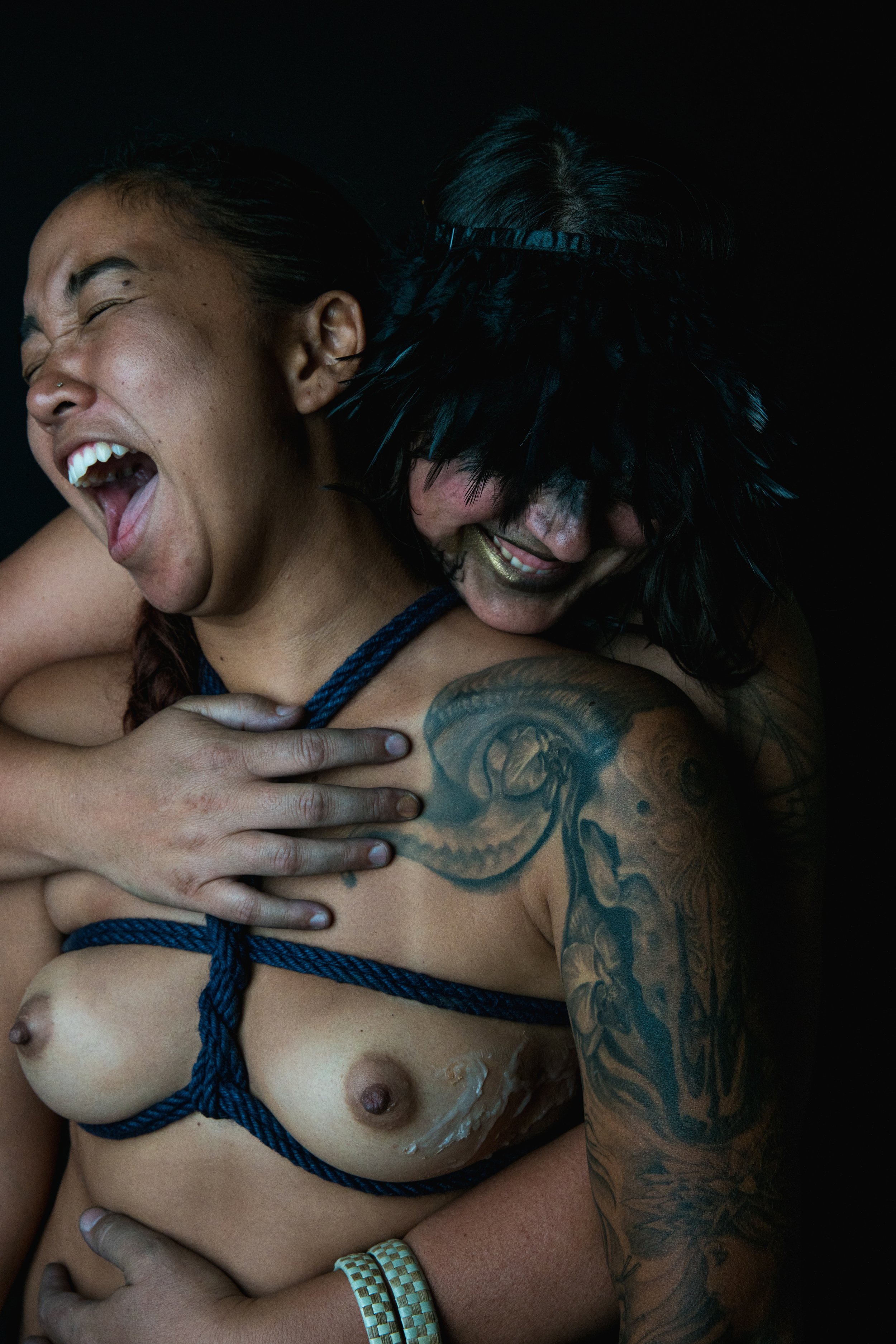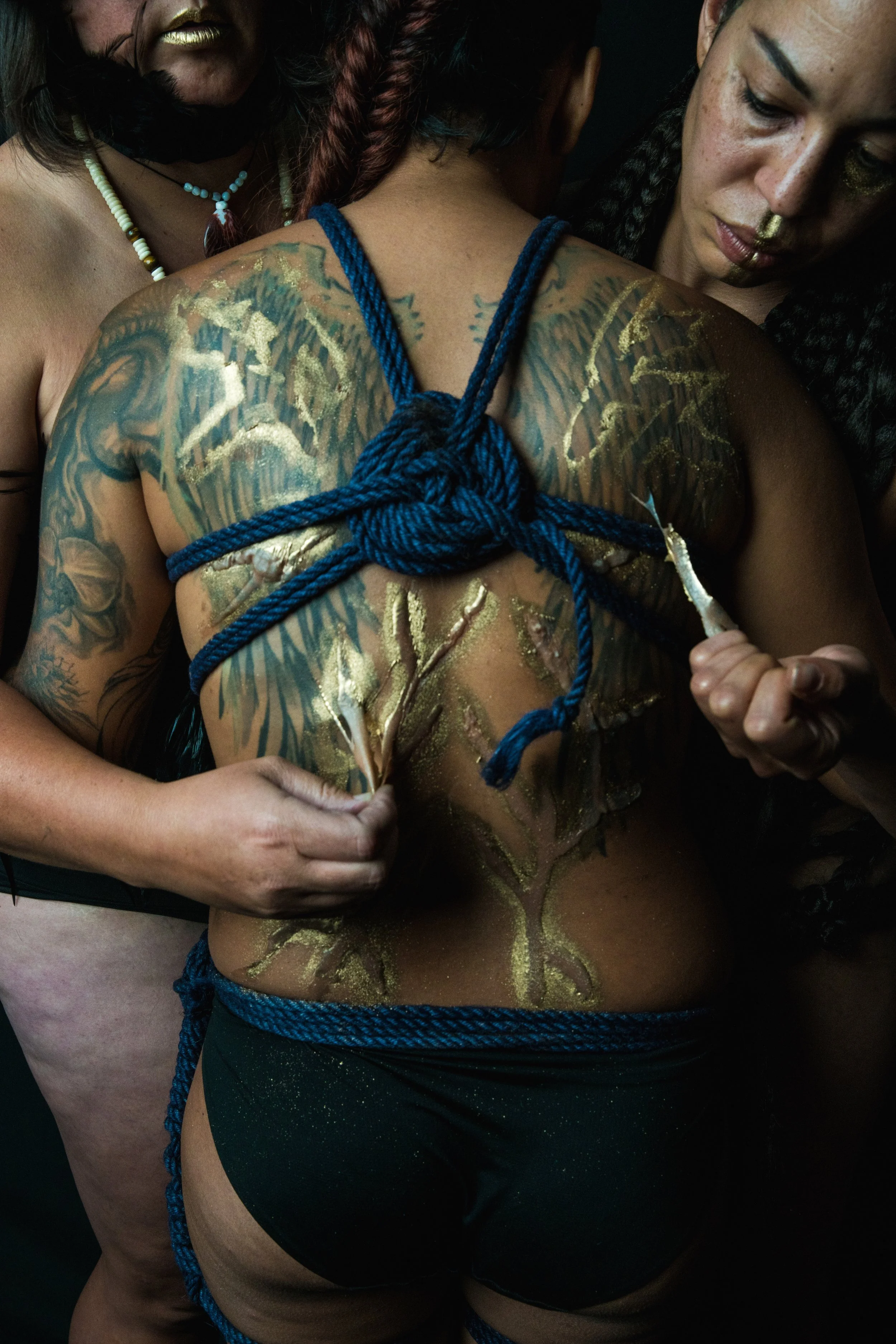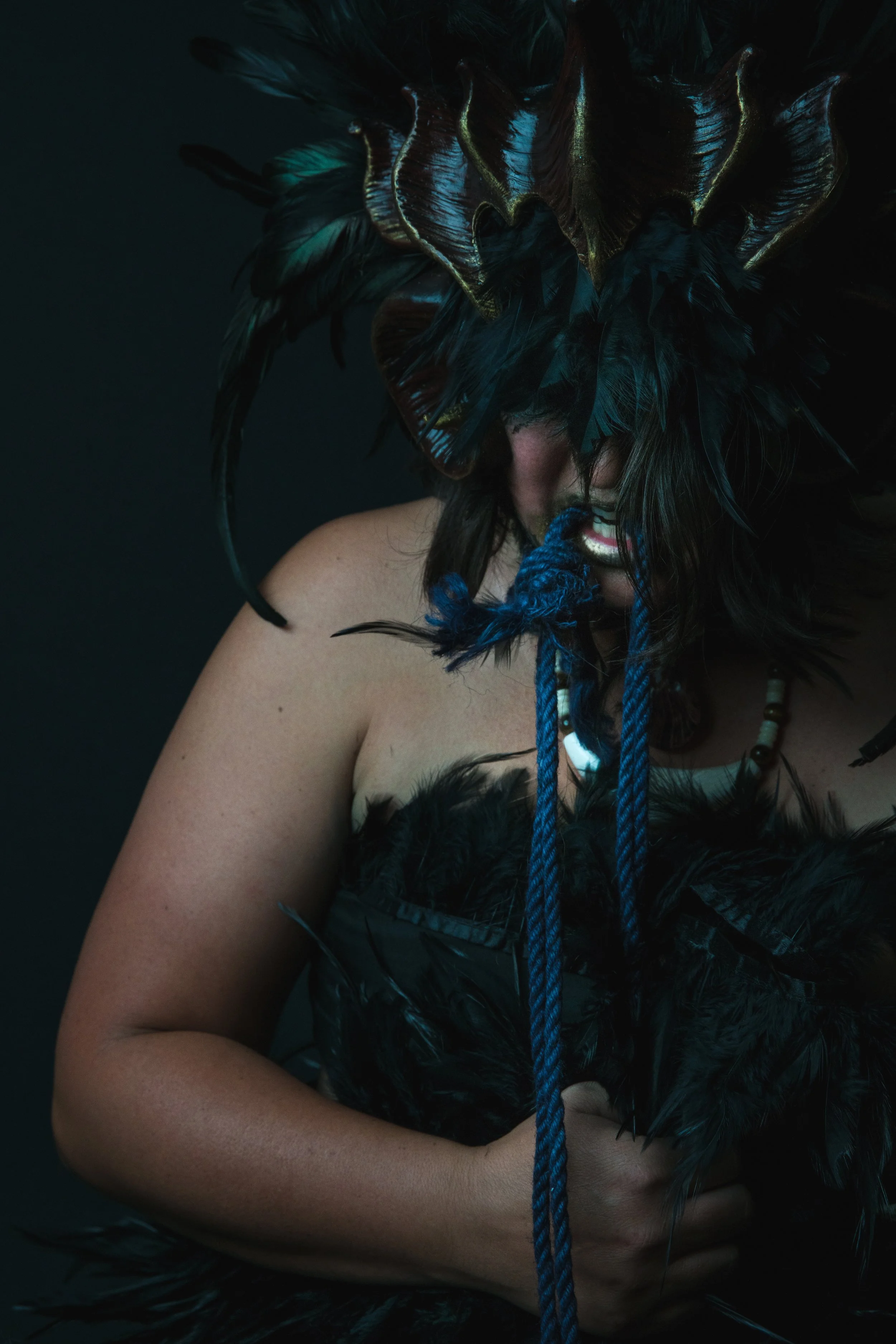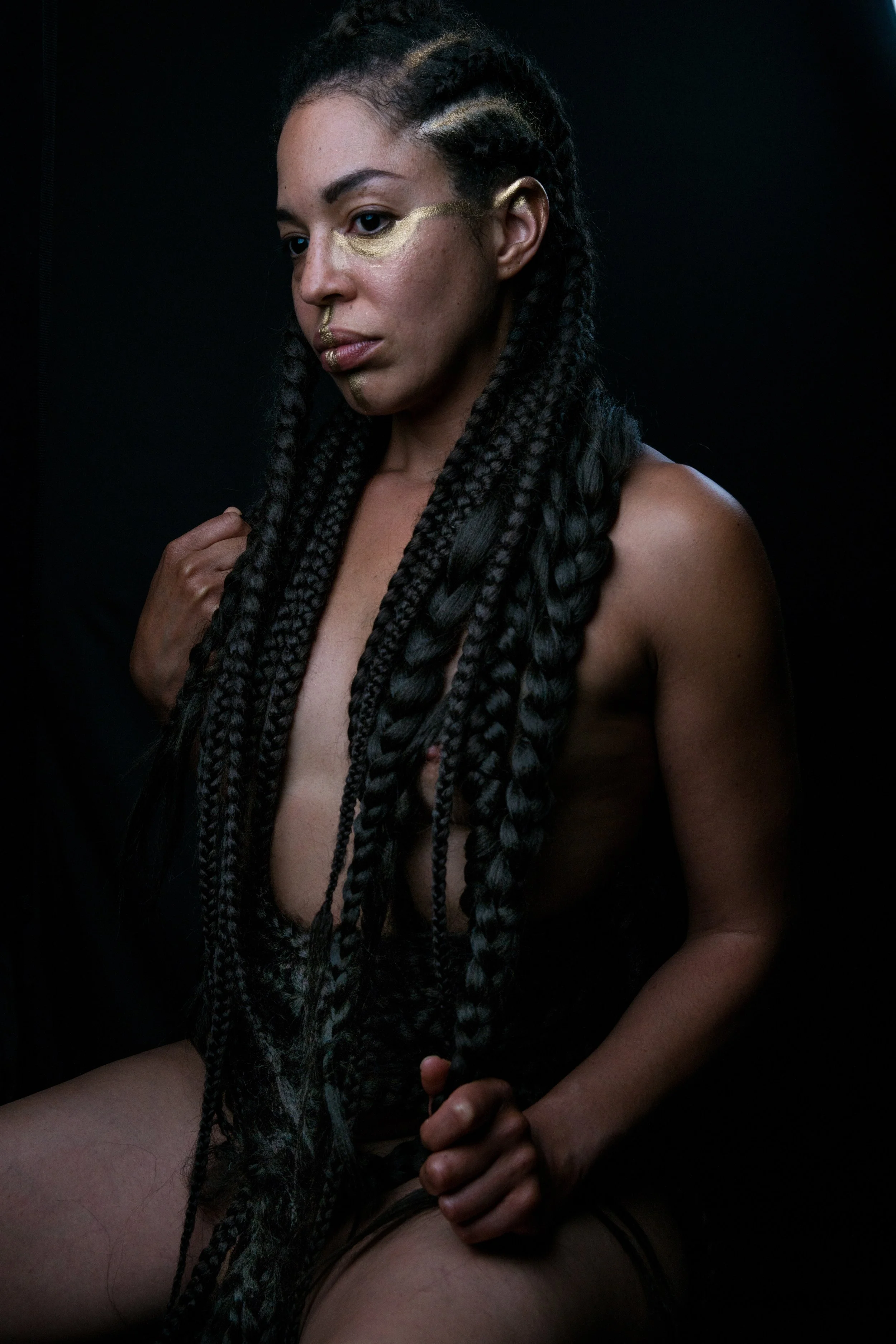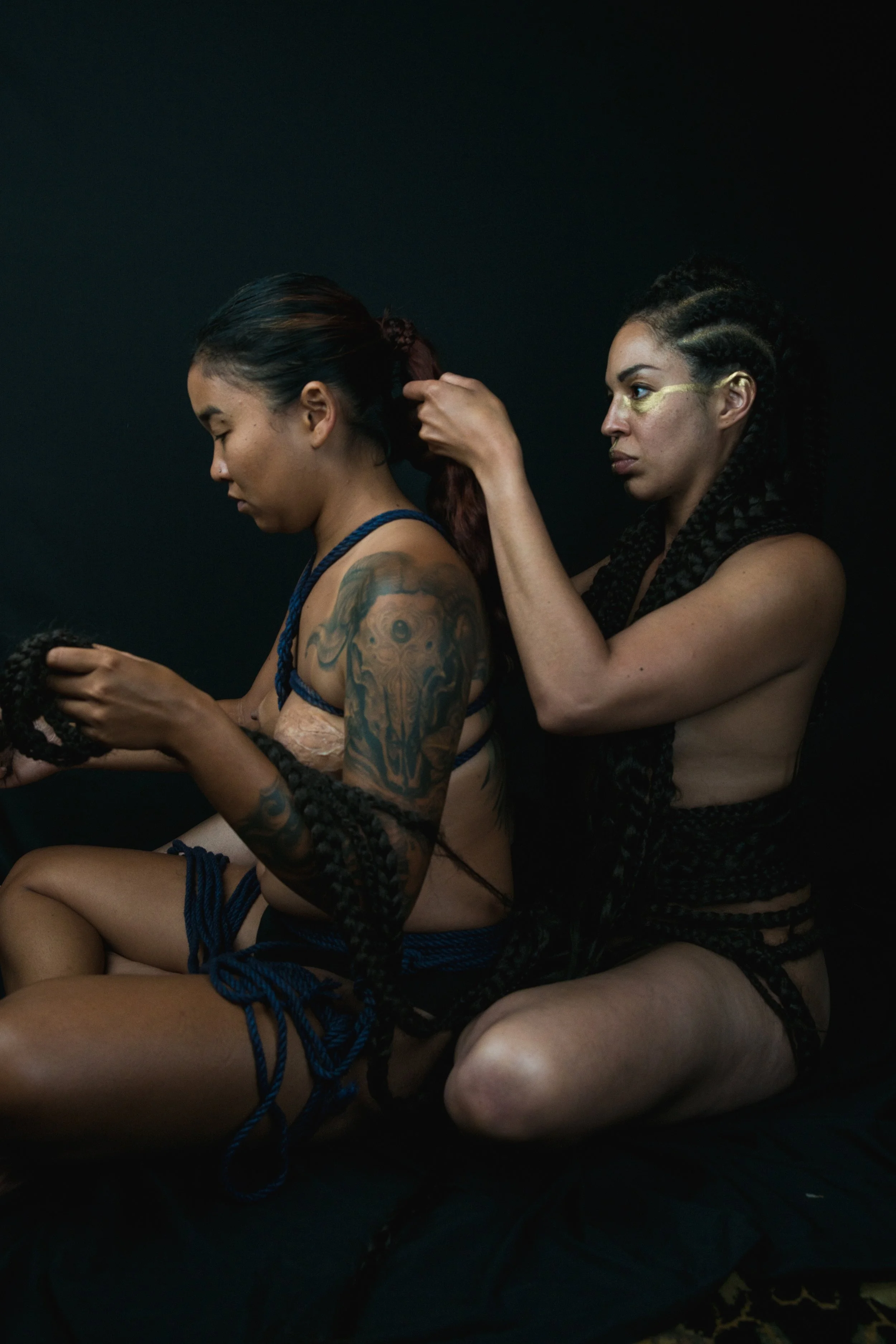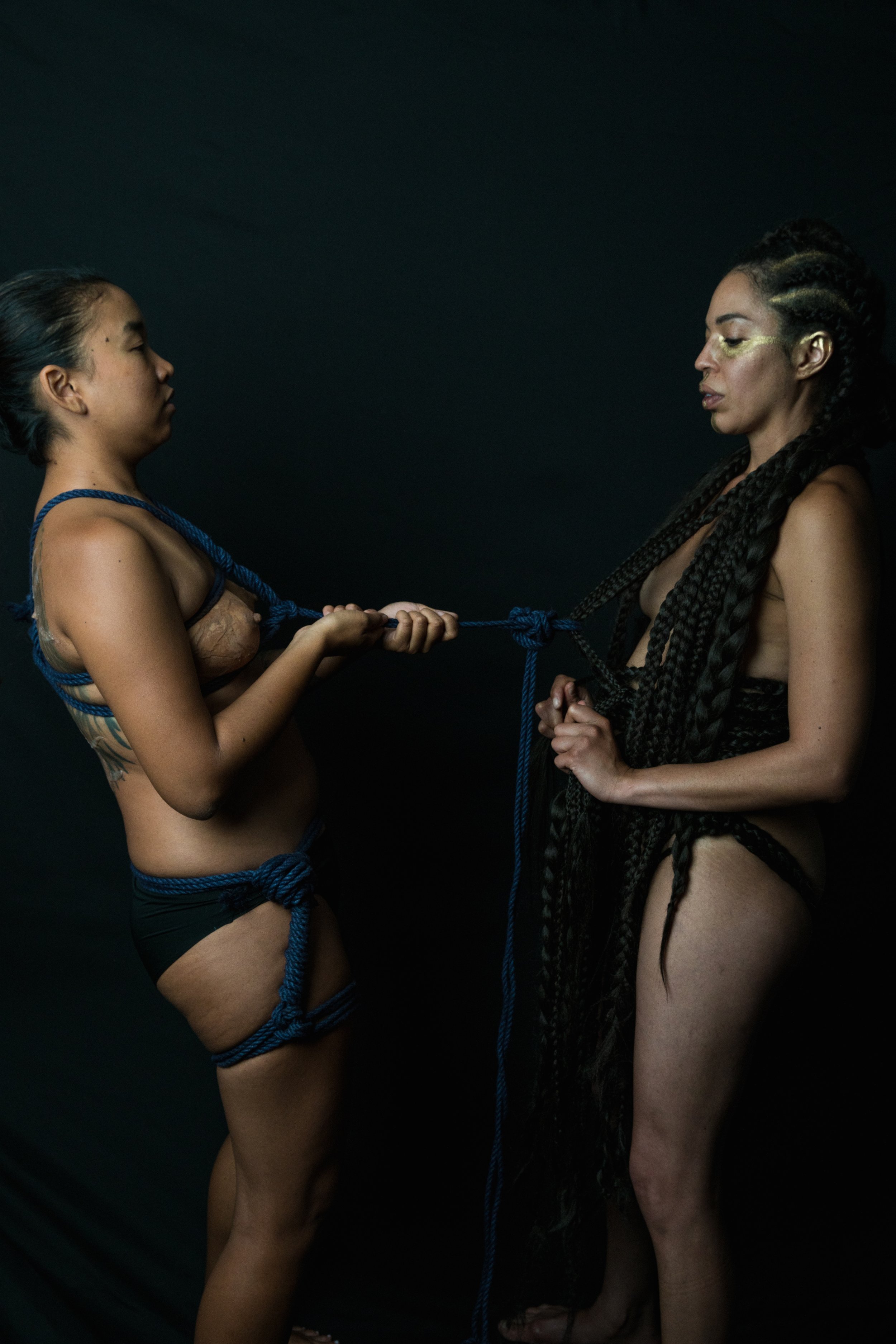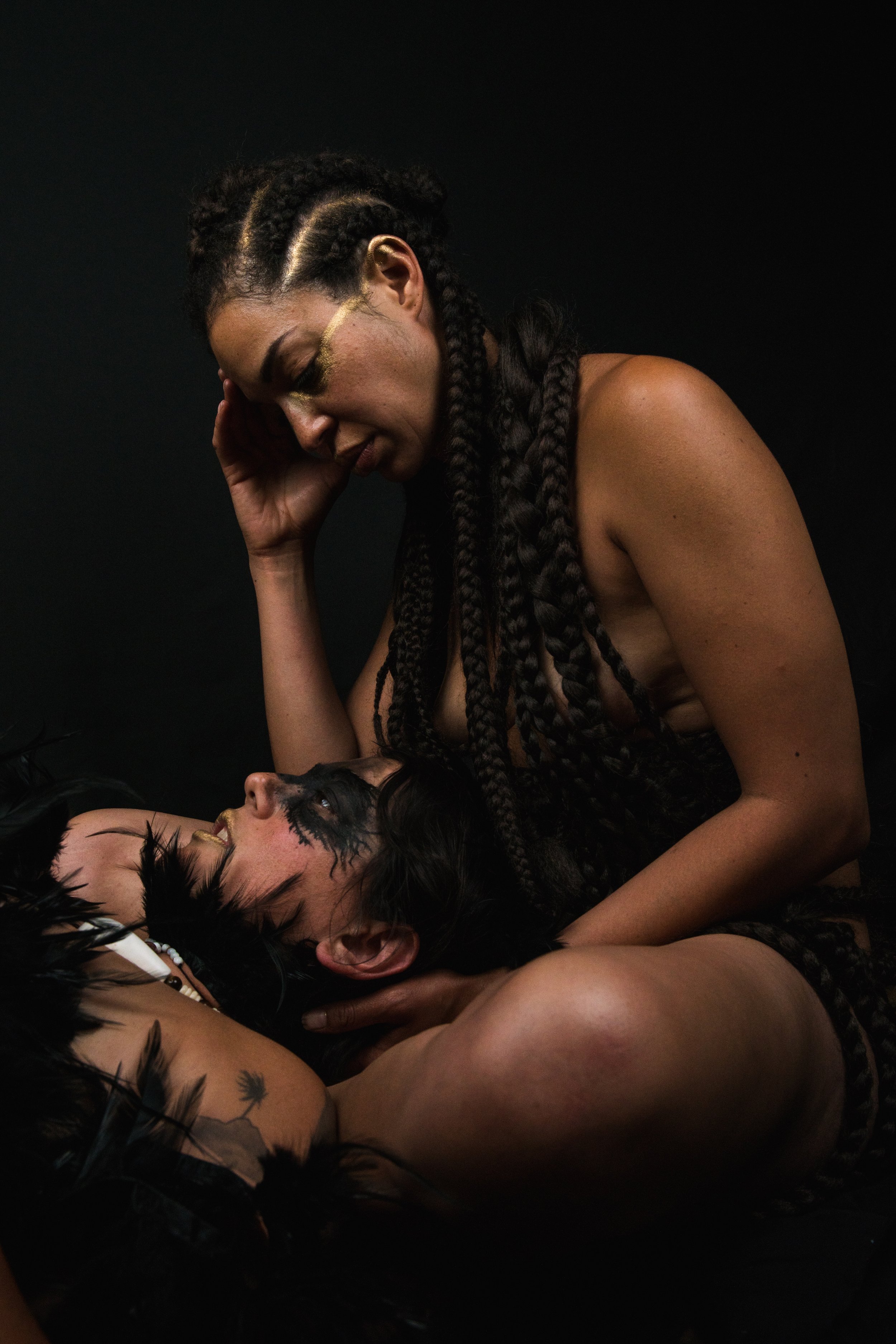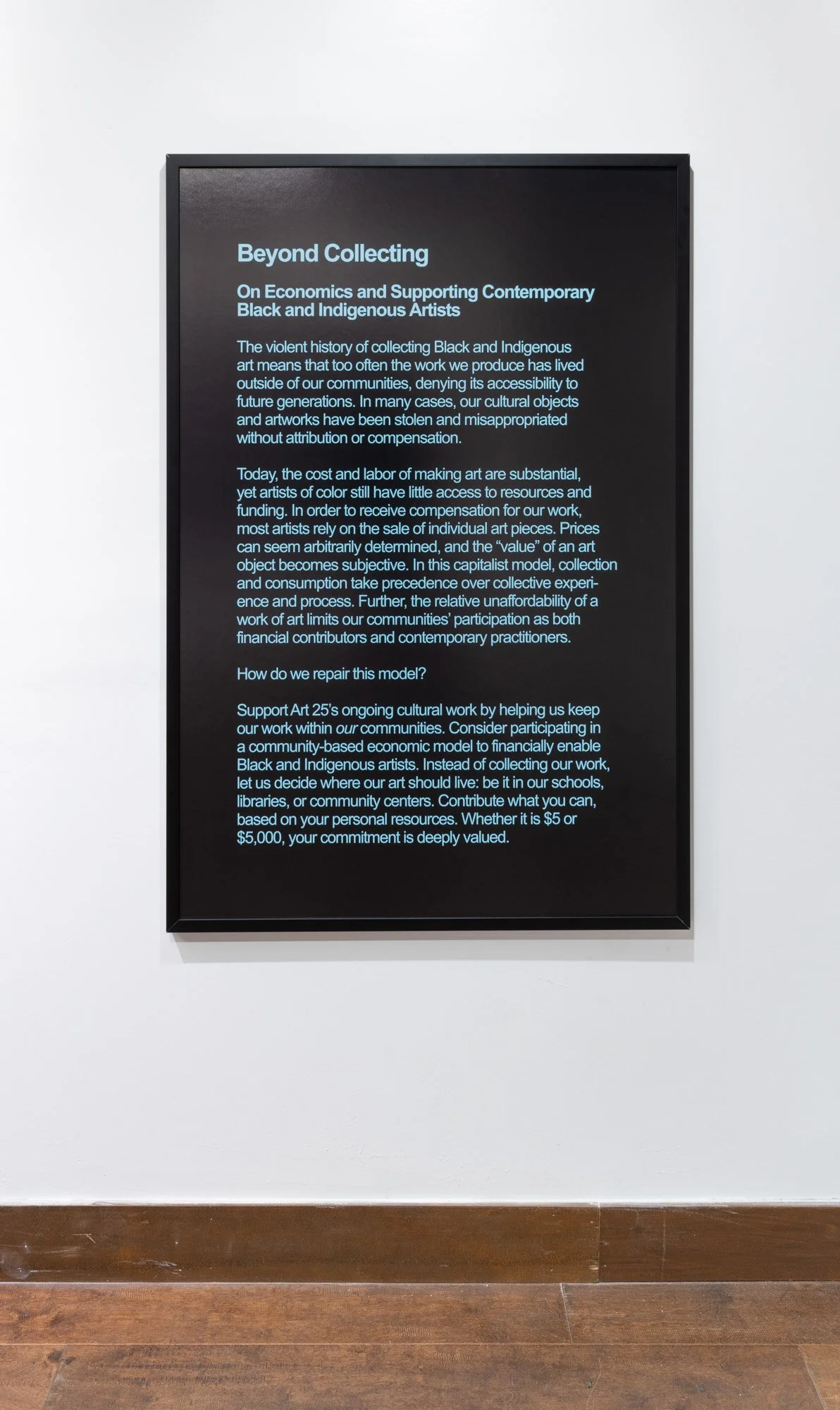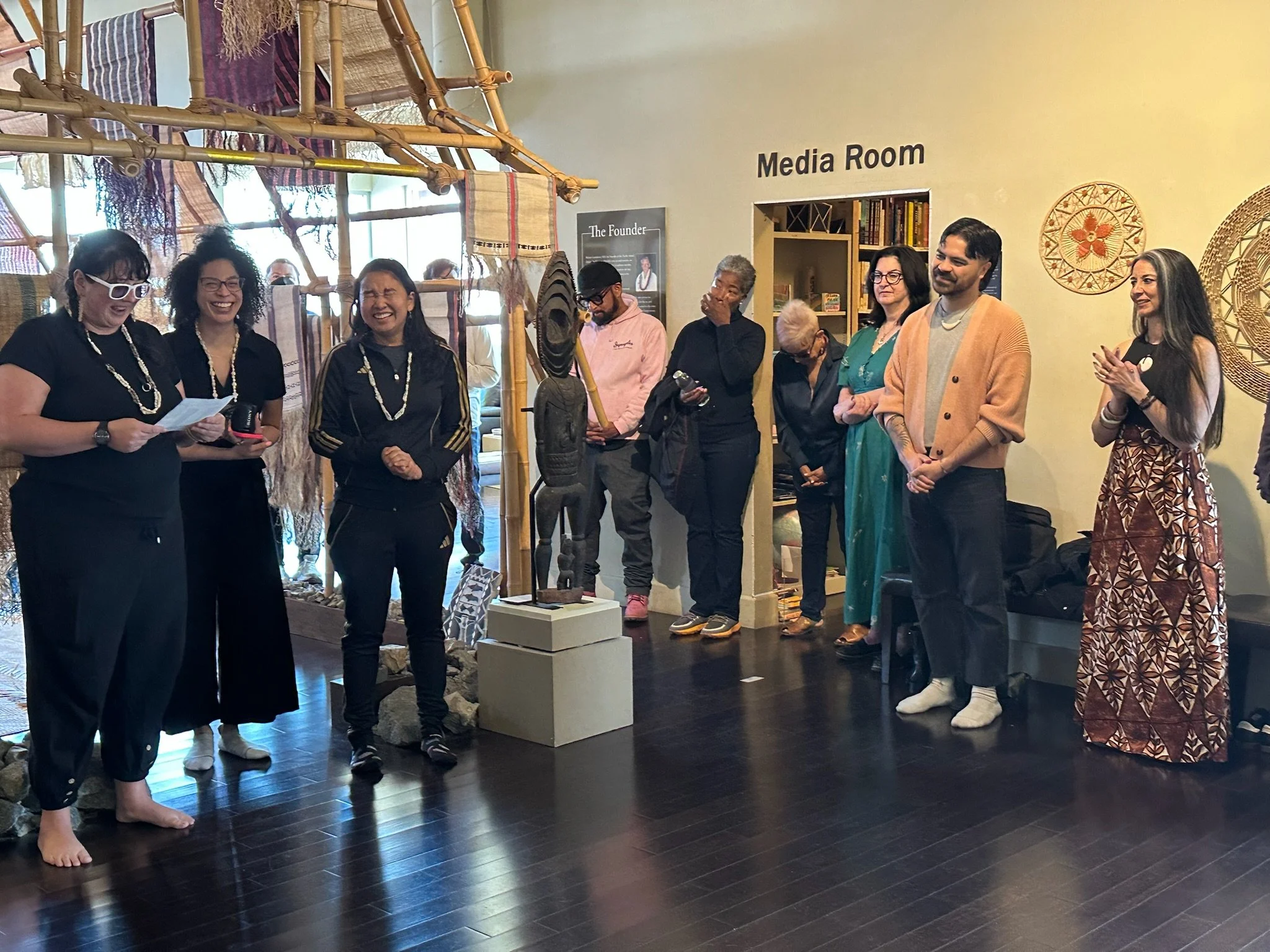Future Ancestors is an archive of queer familial intimacy. When Black and Indigenous bodies are kept at each other’s distance, the importance of coming together becomes more precious, resonant, and necessary. It is out of this necessity that we create and document the opportunities of time and intention. To talk story, to sing, to share our cultural histories. To create routes that span geographies and centuries. We are CHamoru, Kanaka Maoli, Black, and many mixed ancestries. All reside in this intimacy. Listen. These ancestries speak.
To create Future Ancestors, Jarrett, Ng and Taitano focused on physical transformation, incorporating cultural mythologies, embodiments, and projections that represent present-day Future Ancestors. By imagining and embodying these roles, the artists claim their ancestral histories and simultaneously construct a contemporary conversation about survival and representation across borders, space, and time.
Taitano’s transformation into that of “Mochong,” the last female åga (Mariana Crow) of Guåhan, who died in captivity of kidney failure in 2011, is a way of honoring this relative and ancestor, bringing her memory ever into the present and future. Ng’s transformation is a mapping, via bodily scarring, of her late grandmother’s terminal cancer, overlapped with her interpretation of shibari (Japanese rope art that originated as a restraint technique) in which knots and binding represent trust, connection, and a way of keeping things together. Jarrett’s transformation includes a continuous braid of hair, representative of generations of her African ancestors who have passed down their knowledge (in ways seen and unseen) of weaving and plaiting. The exhibit includes large-scale photographs that document their interactions as well as a sound installation of collaborative poetry. Photography by Bryan Kamaoli Kuwada. Courtesy of Art 25.
Future Ancestors has exhibited at Orì Gallery (Portland, Yerba Buena Center for the Arts (San Francisco), Arc Gallery (San Francisco), and Pacific Islander Ethnic Art Museum (Long Beach). Iterations and collaborations with Future Ancestors continue to be exhibited at Pilele Projects (Los Angeles).

